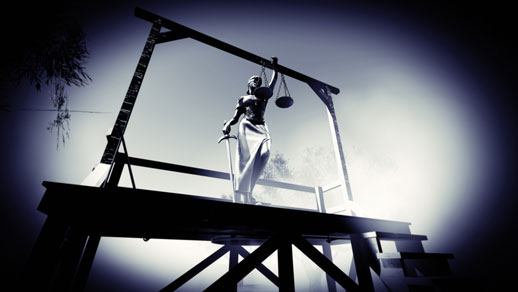
This is undisputed: In Montgomery, Ala., a little before 11 o'clock on the night of Aug. 20, 1997, Adams burst into the home of the Andrew Mills family. Mills had dropped off to sleep in the living room. His pregnant wife, "Missy," and their three young children were asleep in their rooms.
Adams threatened Mills with a boning knife, robbed him of what cash he had on hand, and stupidly ordered him to go to an automatic banking machine and get some more. As soon as Mills left, Adams raped his wife, stabbed her repeatedly and killed her unborn child. Mills soon returned with police. Missy Mills died that night of massive wounds to her neck, liver and lungs. An Alabama jury found Adams guilty of murder in the first degree and voted 10-2 for his execution.
Those are the facts. This is another fact: At the time of the crime in 1997, Adams was 17 years and 2 months old.
The facts in the case of Christopher Simmons were as appalling as the facts in the case of Renaldo Adams. Young Simmons and an accomplice kidnapped Shirley Crook in the middle of the night, bound her in duct tape, and threw her into the Meramec River a few miles south of St. Louis. They killed her for the fun of it, after boasting that they would never be punished because they were only 17. The accomplice turned state's evidence. Simmons was sentenced to death.
Missouri's Supreme Court, after first affirming, reversed itself in 2003 and the case went up to the U.S. Supreme Court. There it led to the high court's 5-4 decision a year ago in which Justice Anthony Kennedy laid down the new rule on capital punishment: In a warmly concurring opinion, Justice John Paul Stevens praised the alternative life sentence as a manifestation of the court's "evolving standards of decency."
Kennedy's opinion drew strong criticism as an unwarranted piece of judicial activism. Writing in The New Republic, professor Jeffrey Rosen called it "careless," "embarrassing," "analytically sloppy and glib." Within the court, Justice Sandra Day O'Connor strongly dissented. Justice Antonin Scalia delivered a withering dissent: Kennedy's reasoning, said Scalia, was "astounding," "implausible," a "mockery" of the first principles of jurisprudence.
We will learn shortly if the Supreme Court is willing to plunge back into the thicket created by its opinion in the Simmons case. Since that was decided a year ago, Chief Justice William Rehnquist has died and Justice O'Connor has retired. The changes have brought a new chief justice, John G. Roberts, and a new associate justice, Samuel Alito. For good or ill, an old rule may govern the outcome: The more things change, the more they stay the same.
Alabama's attorney general, Troy King, has filed a persuasive petition in the pending Adams case. "There is no principled basis," he contends, "for concluding that 17-year-old murderers, as a class, are categorically incapable of acting with a degree of moral culpability deserving of society's severest punishment." He concedes that some youths are not capable. But others most assuredly are — and if sentencing "is to have any mooring in reality, culpability must be assessed on an individualized basis."
This strikes me as a sound view of human behavior. More to the point, it suggests a sound course to be pursued in appraising the court's leap to constitutional judgment. There is no massive, demonstrable rush among the states to lower the minimum age at which juveniles are exempt from capital punishment. It is a time for the states to make haste slowly.
In his majority opinion for the court a year ago in the Simmons case, Justice Kennedy intrepidly asserted, "A line must be drawn." So he drew it at the age of 18. My own thought is that if a new line must be drawn, let the states draw it one by one.
(Letters to Mr. Kilpatrick should be sent by e-mail to kilpatjj@aol.com.)
COPYRIGHT 2005 UNIVERSAL PRESS SYNDICATE
This feature may not be reproduced or distributed electronically, in print or otherwise without the written permission of uclick and Universal Press Syndicate.


